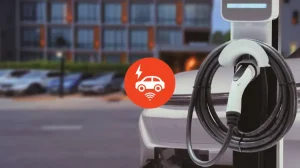Smart parking systems for more liveable cities
The increasing number of vehicles in big cities and the scarcity of parking spaces are leading to problems such as congestion, pollution, and nervous, frustrated drivers. These factors can be particularly intense at peak times when traffic is at its heaviest and it is almost impossible to find a vacant parking space. This is one of the urban crises of the 21st century, and many technological innovations have been developed to solve it.
Smart parking systems, which rely on the analysis and processing of real-time data collected by different vehicle detection technologies, are a key element of these innovations. By deploying such systems, parking time and emissions can be reduced, and parking operators can also gain valuable insights by analysing parking data.
Accurate and reliable real-time data collection is therefore the key to a well-functioning smart parking system, and our aim is to show which are the most advanced tools that can do this today. In terms of outdoor parking, there are currently two technologies available: cameras and smart parking sensors embedded in the pavement. Both solutions have their advantages and disadvantages, choosing the right smart parking system depends on the specific project needs.
Advantages and disadvantages of camera-based smart parking solutions
There are two types of camera-based smart parking solutions, which differ in the way they process data:
- Evaluation of occupancy data on the spot. The recording is processed on-site, meaning that the central system only receives the free/occupied status from the camera.
- Central evaluation of occupancy data. The camera only makes recordings, and the real-time stream is evaluated on a central server.
One of the advantages of a camera-based solution is that many parking spaces can be monitored at the same time, so it may seem like an efficient solution at first. However, this requires the cameras to be positioned high enough to monitor a larger area, which is often not possible, especially in urban environments with on-street parking spaces. For this reason, the cameras are often not able to determine the occupancy status of parking spaces with sufficient accuracy, since a large parking vehicle, such as a van, can hide several parking spaces at the same time from the camera. A further difficulty is that some streets are winding, requiring the installation of more cameras, not to mention the fact that a tree in the street can negatively affect the camera’s coverage.
Cameras are also challenged by different environmental conditions: poor lighting conditions, heavy rain or snowfall, and dust on lenses can also affect the accuracy of detection.
The installation of camera-based parking solutions is not entirely without its challenges. Two different implementation methods can typically be distinguished: the first is the installation of new cameras specifically designed to monitor the occupancy of parking spaces, and the second is the use of existing cameras, usually installed for surveillance purposes.
Power supply could be a potential challenge when installing new cameras, which at first sight may seem easy to overcome. In an urban environment, however, providing power can often be tricky, as for example in Budapest, buildings, lamp posts and other potential power sources are owned by different stakeholders, which can create a number of bureaucratic traps. Using existing cameras to determine parking space occupancy may be a solution if the location of the CCTV cameras is suitable for parking space monitoring purposes. Admittedly, this is typically rare, but if it does occur, the provision of power source is not a problem.
If a parking space monitoring system can be implemented in an urban environment in a cost-efficient way, either with existing or new cameras, it may be able to categorise vehicles in contrast to a sensor-based solution. In this way, a separate statistical report can be provided for each vehicle type. In addition, camera-based solutions can typically be complemented by a number plate recognition feature as well. An additional advantage over magnetic sensors is that cameras may be able to identify objects that occupy the parking space but are for some reason not detected by the sensors.
When is it recommended?
Cameras can typically be a good solution where a large contiguous parking area – at best, illuminated at night – needs to be monitored and cameras can be installed at any point and height. Examples of such places are supermarkets, shopping malls or airport parking lots, and also P+R (Park and Ride) in some urban environments.
Advantages and disadvantages of sensor-based smart parking solutions
Nowadays, smart parking sensors are the most universal solution for measuring the occupancy of parking spaces as accurately and efficiently as possible. The fundamental difference between the various smart parking sensors lies in their detection mechanism:
- Magnetometer sensors. These sensors continuously monitor the magnetic field to detect changes caused by, for example, a vehicle being parked or unparked. The measurements are then typically transmitted to a central sensor management system, where an algorithm evaluates the data and determines whether the parking space is occupied or vacant. The magnetometer technology is well suited to all weather conditions, but is sensitive to electromagnetic interference, so its application can be problematic near high-power power lines.
- Radar sensors. Sensors emit electromagnetic waves, and these waves are reflected from parked vehicles. Radar technology is less affected by weather conditions and more resistant to contamination, making it suitable for outdoor use.
- Infrared sensors. These sensors typically consist of a LED emitter and a photocell that measures the light reflected from objects, such as parked cars. However, this technology is used less frequently for monitoring the occupancy of parking spaces due to the environmental influences associated with outdoor use (e.g. dust).
- Ultrasonic sensors. The sensors emit ultrasonic sound and measure the reflection of these sound waves. This solution is mainly installed in indoor car parks, fixed to the ceiling. The technology is only occasionally used in outdoor parking sensors, as it works similar to the radar technology, but is typically slightly less accurate.
Each of these detection mechanisms has its own advantages and disadvantages. Experience so far has shown that no detection mechanism is adequate enough by themself to monitor the occupancy of outdoor parking lots, as each has its own drawbacks that can distort the effectiveness. In order for a smart parking sensor to work as reliably and accurately as possible, while at the same time being energy efficient, it is advisable to combine several detection mechanisms, usually two at a time.
Smart parking sensors with a single detection mechanism can typically determine the occupancy of a parking space with a reliability of around 95-98%, while sensors with dual detection can typically determine occupancy with a reliability of 98-99%.
By installing parking sensors per parking space, they can typically detect parked vehicles more accurately in on-street settings compared to a camera-based solution. This is because external factors such as obstructions obscuring the camera image or larger vehicles do not hinder the reliable operation of the sensors.
Other advantages of the sensor-based solutions are that no external power source is required for their operation, yet a long lifetime of more than 5 years on average is ensured thanks to NB-IoT communication and their energy-efficient design.
This solution may at first sight seem less advantageous than camera technology in terms of economies of scale, as sensors have to be installed in each parking space, but in return sensors offer much higher reliability. The only potential problem is when a parked car occupies two spaces at the same time, in which case the sensor may not detect that both spaces are occupied. Furthermore, the lack of extensive NB-IoT coverage in a given country/city could be an issue, but fortunately with the spread of mobile technologies this risk is now considered to be minimal.
Smart Lynx’s dual-detection sensors use magnetometer and radar to take measurements, exploiting the advantages of both technologies. If the sensor detects a significant change during the primary magnetic measurement, the radar detector performs a secondary measurement to determine the occupancy status of the parking space. Dual-detection sensors can determine whether a space is occupied or vacant as a stand-alone solution, with over 99% reliability, so no central sensor management system is required.
When is it recommended?
As mentioned above, the sensor-based smart parking solution is one of the most universal ones, so it can operate efficiently and accurately in any outdoor parking environment, whether it’s a typical urban environment or a tropical location more exposed to the weather.
To summarise our article, the following picture gives an overview of the main advantages and disadvantages of the solutions, showing that the advantages of dual-detection smart parking sensors outweigh the disadvantages:

Hopefully, this article has helped to better understand the underlying technologies of different parking systems and has provided a comprehensive insight into the advantages and disadvantages of outdoor parking space occupancy monitoring solutions. For more in-depth information, visit our smart parking sensor dedicated page or feel free to contact us.





